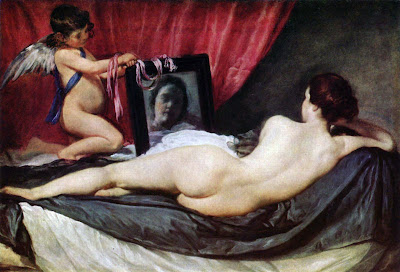 In the spirit of next week’s NY ComicCon, I have decide to choose a piece of art from one of my favorite comic artists for nearly 20 years now, Jim Lee. I think that I first saw Mr. Lee’s work in Marvel X-Men during the early 1990’s and one if his more recent works “Hush” is perhaps one of my favorite graphic novels. I chose this piece because I quickly noticed a classic compositional form in how Mr. Lee has arranged his figures. He has chosen a triangular arragnement having the top of Superman’s head, the point of Batman’s sword and the edge of Wonder Woman’s shield being the peaks of the triangle. I triangular composition exudes strength and stability and I believe that Mr. Lee chose this arrangement to reinforce the heroic quality of the figures. The brightest, most saturated colors lie within this triangle and fade out to lighter or less saturated areas outside this area. This composition which can be viewed as far back as Da Vinci and his Madonna oof the Rocks (and farther back I am sure) shows Mr. Lee’s knowledge of classic art history.
In the spirit of next week’s NY ComicCon, I have decide to choose a piece of art from one of my favorite comic artists for nearly 20 years now, Jim Lee. I think that I first saw Mr. Lee’s work in Marvel X-Men during the early 1990’s and one if his more recent works “Hush” is perhaps one of my favorite graphic novels. I chose this piece because I quickly noticed a classic compositional form in how Mr. Lee has arranged his figures. He has chosen a triangular arragnement having the top of Superman’s head, the point of Batman’s sword and the edge of Wonder Woman’s shield being the peaks of the triangle. I triangular composition exudes strength and stability and I believe that Mr. Lee chose this arrangement to reinforce the heroic quality of the figures. The brightest, most saturated colors lie within this triangle and fade out to lighter or less saturated areas outside this area. This composition which can be viewed as far back as Da Vinci and his Madonna oof the Rocks (and farther back I am sure) shows Mr. Lee’s knowledge of classic art history.
I will attempt to recognize and utilize these types of composition geometries when I create new pieces.



